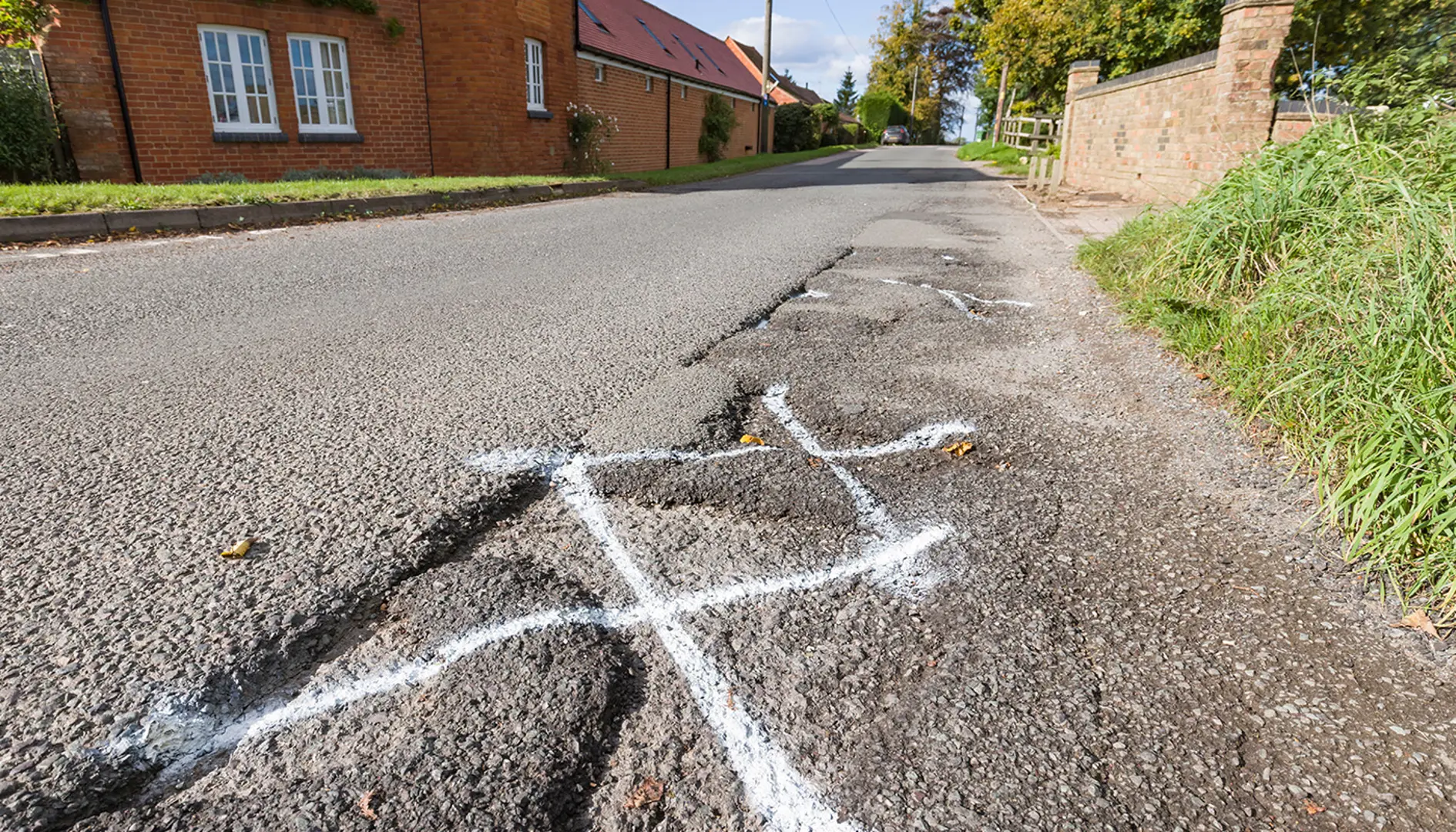
The state of the UK’s roads is an increasingly popular moan among drivers, from professional logistics people to cyclists and parents on the school run.
More than £1 billion has been spent on filling 17.5 million potholes over the last decade – that’s one every 18 seconds, every day – including 1.9 million in the past year alone.
And although it’s a good topic for a light-hearted whinge over dinner, the fact that half of local roads in England and Wales are within 15 years of crumbling is no laughing matter.
The statistics from the 2025 ALARM Survey spotlight a situation that has the potential to hit fleet budgets hard at a time when the economy is fragile.
For fleet managers it’s an even bumpier ride because damaged roads increase fuel consumption, accelerate wear and tear on vehicles and hit driver productivity hard.
Poor surfaces present an estimated £16.81 billion headache, but fleet managers can seize back control of how they affect monthly and annual fuel spends just by using the right tools.
The smart tracking, route planning and low-cost fuel access in the fuelGenie package helps businesses monitor the real cost of bad roads – to stay ahead of the pack.
Cracked surfaces, potholes, and patched-up repairs affect fleet vehicles in three key areas:
- Reduced fuel efficiency: Uneven road surfaces and poor traction increase rolling resistance, making engines work harder and burn more fuel.
- Higher vehicle maintenance: Frequent pothole strikes or rough roads take their toll on suspension systems, tyres, steering components and wheel alignment.
- Lost productivity: Drivers slow down, take detours or stop to report damage - costing time and money.
But fuelGenie helps businesses respond smartly by tracking fuel efficiency by driver and vehicle, so managers can monitor usage patterns such as sudden MPG drops that could be caused by poor roads.
A route showing consistently higher fuel spend could be a sign of rough road surfaces increasing consumption. By analysing it over time using fuelGenie’s reporting tools, firms can act before inefficiencies escalate.
In some areas rough or bumpy roads may be unavoidable, but high fuel prices definitely aren’t, and fuelGenie gives your fleet access to low-cost supermarket fuel to help you control spend at the pump.
Pothole-heavy routes don’t just impact fuel use, they also put a strain on critical vehicle systems such as suspensions, steering and tyres, leading to more frequent repairs or early replacements.
The fuelGenie tools allow operators to track vehicle-level trends so fleet managers can stay ahead of wear-related issues caused by poor roads. Whether it's an unexplained MPG drop or a rise in driver complaints, early data gives you time to act before issues become costly breakdowns.
It’s clear from the 2025 ALARM Survey that local authorities are struggling to fund long-term solutions, so fleet managers need to take the initiative to protect their teams’ livelihoods. That’s where fuelGenie bridges the gap between deteriorating infrastructure and business resilience.
Where roads are closed for repair, its app provides real-time alternative routes that run close to partner supermarket forecourts.
Free cards allow drivers to skirt the jams, stay fresh and fill up with no need to wait for their expenses to be paid back. It’s all done through one system and linked to a dashboard.
And there’s no need for the accounts department to chase receipts. Everything is geared towards easy invoicing which aligns with HMRC requirements at the end of the tax year.
So although road conditions may be out of your hands, your fleet’s performance doesn’t have to be.
Taking a data-driven approach to manage fuel use, spot hidden costs and optimise routes will keep your drivers on track and you on budget – however rough the road ahead gets.
Did you know? (stats from The Asphalt Industry Alliance ALARM 2025 report)
Local roads are considered to be councils’ most valuable asset, worth in excess of £400 billion - but only around 1% of this value is spent on their annual maintenance.
Highway maintenance budgets saw real terms cut of 4.1% in England and Wales.
The average percentage of highway maintenance budget spent on the carriageway is up slightly but is still just 53%.
Local authorities in England and Wales said they would have needed an extra £7.4 million each last year to maintain their network to their own targets.
Around £16 billion is needed for local authorities to bring the network up to their ‘ideal’ conditions – and the work would take 12 years.
Less than half (48%) of the local road network is reported to be in good structural condition, with the remaining 52% stated to have less than 15 years’ structural life remaining.
Road Condition Index (RCI) data shows that around 24,500 miles – more than one in every 10 miles – of network in England and Wales is likely to require maintenance in the next 12 months.


